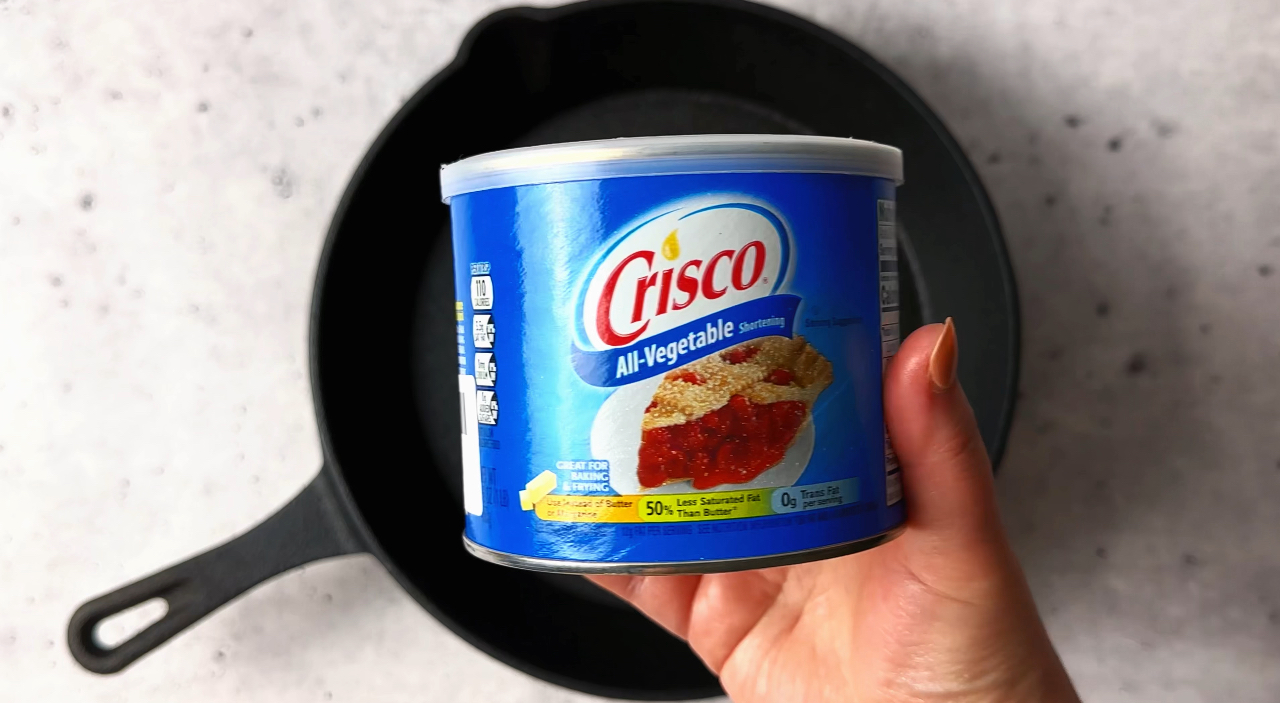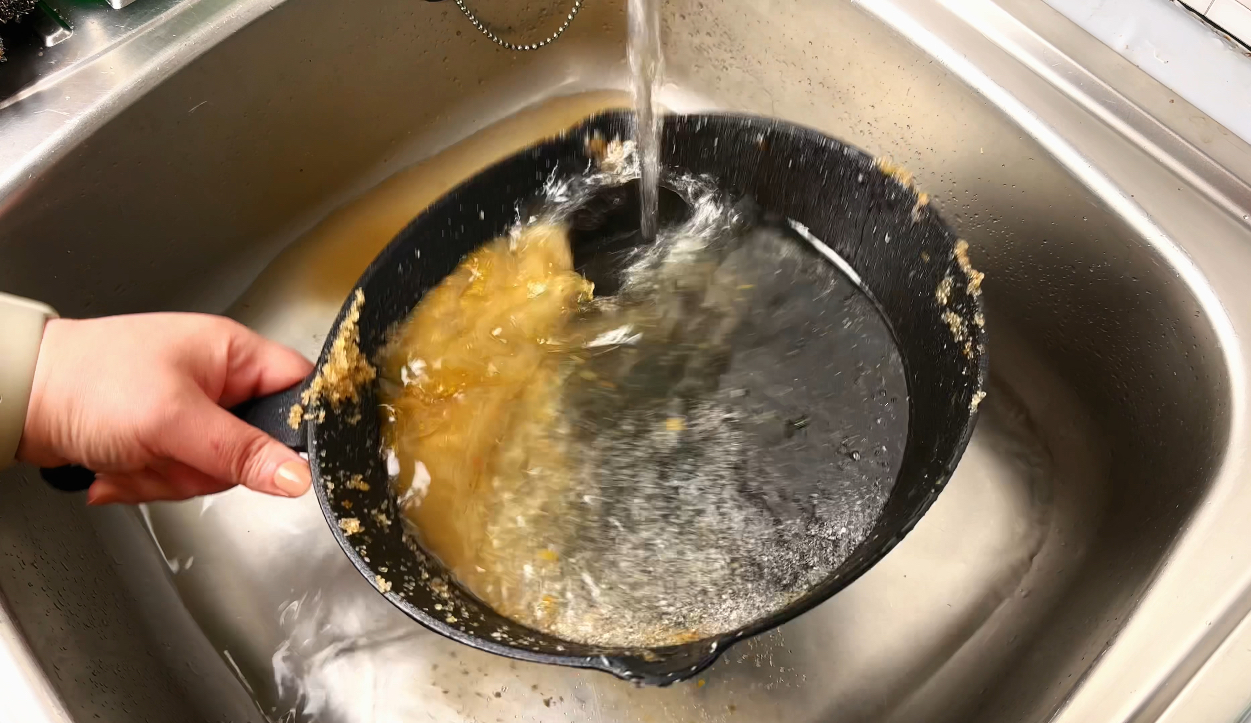
Home cooks and chefs love cast iron pans because they last for decades, transition from stovetop to oven easily, can be used on any type of heat source and can get plant based meals deliciously crispy and golden. If your ideal vegan recipes involve anything from sautéing veggies to roasting root vegetables, or baking a delicious batch of vegan brownies, a seasoned cast iron pan can bring out all of that flavour. However, you can only maximise their value if you are well aware of how to maintain them. In this blog post, I will talk you through the step-by-step process of how to clean your cast iron pan, season it and maintain it over time.
Why Cast Iron Pans Are Perfect for a Plant-Based Kitchen
Before we go into all the details of cast iron care, let’s look at why these pans are a solid purchase in your vegan kitchen:
- Even Heat: Cast iron pans give an even heat and hold a temperature longer, so they’re great for sautéing mushrooms or searing tofu to just the right golden-brown.
- Naturally Non-Stick — Once seasoned, your cast iron pan will have a naturally non-stick (chemical free!) surface, which is ideal for cooking oil-free or low-oil vegan food.
- Cooking on Stovetop, Oven and over Campfire as well: Due to their excellent thermal conductivity, cast iron pans work great on the stove or in the oven while retaining heat evenly.
Now that we know how to choose a cast iron pan, let´s see how to take care of it so it can serve you for decades.
Seasoning Your Cast Iron: The Key to a Non-Stick Surface
Seasoning your cast iron is the process of turning raw metal into a cooking surface that will last a lifetime and provides a natural non-stick, easily maintainable surface. It entails swirling a thin layer of oil around the pan and heating it to a high temperature, which initiates a chemical reaction known as polymerisation . Over time through polymerisation, the oil molecules decompose and link together to create a hard, non-stick coating over the surface of the pan. The oil carbonises to make a charred look which improves non-stickiness and heat-resistance.
Seasoning has its advantages well beyond establishing a non-stick environment. It also helps prevent rust by creating a barrier that protects the metal from moisture. A well-seasoned cast iron pan gets better over the years, even decades, as you use it — especially if often cook things with a lot of fat, it’s going to infuse your food with extra flavour. These fat layers build up over time, helping to provide an increasingly non-stick surface and a slight flavour boost to whatever you cook in it next.
Building up a nice seasoning on a cast iron pan takes some work, but it’s worth it for non-stick vegan cooking. Here’s the basic process in a nutshell:
- Use an oil with little to no flavour, and a high smoke point such as vegetable oil or shortening, grape-seed oil, flaxseed oil. These are the perfect oils that can provide you with a tough seasoning. I used vegetable shortening in my video.

- Scrub the Pan– If your pan is new, or if it needs a little pick-me-up, wash it out in warm water with a drop of gentle dish soap. Rinse it thoroughly with a brush or sponge to get off any leftover dirt and let it dry fully. It’s essential that the pan is completely dry before we go onto the next step. You can also place it upside down in pre-heated oven for 10 minutes, like I did in my video.

- Once the Pan is Bone Dry, Add a Very Light Coating of Oil: Pour about a teaspoon or two of oil onto the pan, and wipe it around with a paper towel or cloth. Be sure to smear pan surface, handle and exterior also.

- Bake it Into the Oven: Flip the pan over and put it on the middle rack of your oven. Lay a sheet of aluminium foil on the rack beneath it to catch any drips. Bake for 30 minutes to 1 hr at 450°F / 230°C.
- Turn off the oven and let the pan cool completely inside overnight. This serves to attach the oil to the pan, allowing an even non-stick coating.

After you’ve established a good seasoning base, as stated previously, the best way to improve is by using it often, particularly for recipes with oil. You don’t have to repeat this process every time you clean your cast iron. You can do it every couple of months, or any time it appears to lose its lustre of non stick-ness.
But since you’re going to use it so often, you must be careful with whatever cleaning procedure you perform to preserve that seasoning. And this is what we’re going to talk about next.
Cleaning your Cast Iron After Cooking
This is best way to clean your cast iron in order to avoid damaging the seasoning:
- Let it cool – Give your cast iron pan time to cool down completely at room temperature.
- Cover the Pan in Coarse Salt and Warm Water.

- Scrape Away Food Remains – Get a slightly abrasive sponge and scrape off any food bits stuck on.

- Rinse the Pan with Warm Water.

- Dry immediately – You can heat the pan on the stove or in the oven to make sure it’s bone dry. Even a bit of moisture remaining is enough to cause rust.
Avoid using any soap on your cast iron pan as it can strip away the seasoned layer.
You can follow the full seasoning process that I explained above after each use or you can just rub a thin layer of oil over the pan and heat it on the stovetop for a few minutes.
Rusty Pan?
No need to worry about rust on your cast iron pan! It’s fixable. Just give the rusty spot a good scrub with steel wool or a stiff brush until it disappears, rinse, dry thoroughly and repeat the process of seasoning the pan.
Now, with these simple tips on cleaning, seasoning and maintaining your cast iron, you’ll have the best cast iron on the planet and you’ll be cooking with it for years to come. A well used cast iron pan is not merely a piece of equipment, it is an heirloom that can be passed down through generations.
So now, get going with your dishes and let your cast iron pan shine in your kitchen!
